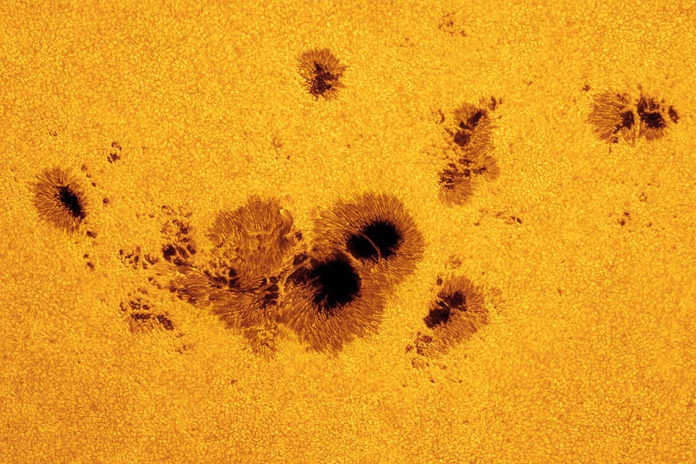Sunspots are disturbances on the surface of the sun. The dark color of the spots is the result of cooler temperatures. The sunspots are caused by activity in the sun’s magnetic field. The dark colored areas are temporary and last from a few weeks to months.
Solar Cycle and Sunspots
The appearance of sunspots follows a solar cycle. This cycle is about eleven years long. The cycle represents changes in the sun’s magnetic activity. When the cycle is at its peak there are many sunspots. In turn, the sunspots are linked to more solar flares and solar radiation from the sun. A solar flare is a brief eruption of high-energy radiation from the sun’s surface.
During periods of high sunspot activity, the earth receives more solar radiation. This affects the ozone layer, radio communications, and the climate.
Sunspots and Mini Ice Ages
The solar cycle is currently at a low point in solar activity. The number of spots appearing on the sun is at a very low level. The last time levels were so low was back in 1906.
Although solar cycles are usually eleven years in length, they may last longer. From 1645 – 1715, the sun experienced an extended period of low solar activity. This period is known as the Little Ice Age. During this period, Europe and North America experienced much colder winters. This affected food production and was a period associated with famine and plagues.
Some scientists believe that the current period of low sunspot might continue. If that happens, another mini Ice Age could be triggered in the near future.
Reflections
Vocabulary
- famine
- Ice Age
- sunspot
Notes
- Sunspots are dark spots that appear on the sun’s surface.
- These spots seem to follow short and long term cycles.
- Periods of low sunspot activity are associated with mini-Ice Ages.

